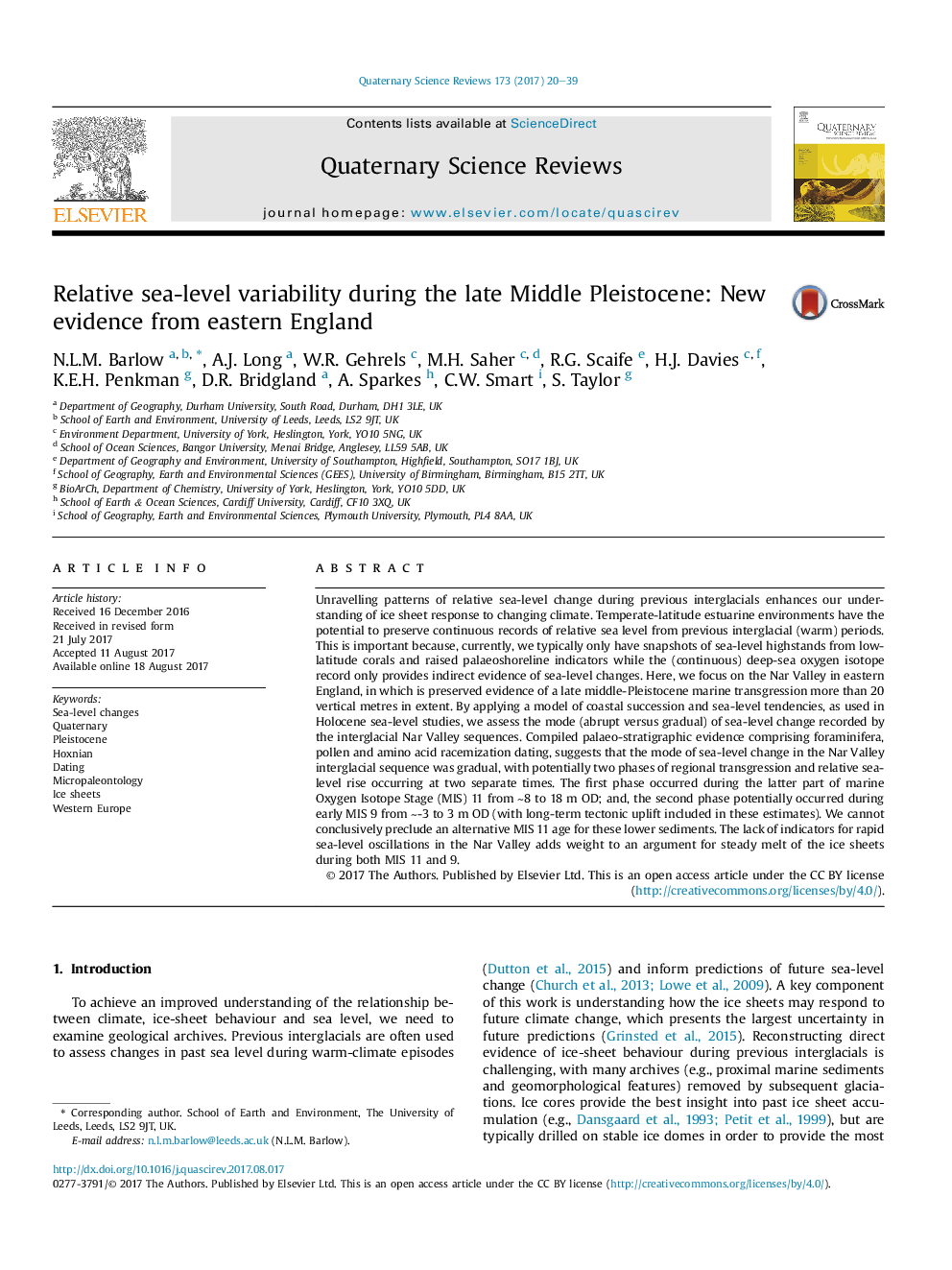| کد مقاله | کد نشریه | سال انتشار | مقاله انگلیسی | نسخه تمام متن |
|---|---|---|---|---|
| 5786504 | 1640762 | 2017 | 20 صفحه PDF | دانلود رایگان |
- The Nar Valley in England provides evidence for late Pleistocene sea-level change.
- Applying methods used in Holocene research we assess the mode of sea-level change.
- Our new analysis suggests marine transgression occurred during both MIS 11 and 9.
- We find no evidence for rapid sea-level change in the Nar Valley sequence.
- Results adds weight to argument for steady melt of ice sheets during MIS 11 and 9.
Unravelling patterns of relative sea-level change during previous interglacials enhances our understanding of ice sheet response to changing climate. Temperate-latitude estuarine environments have the potential to preserve continuous records of relative sea level from previous interglacial (warm) periods. This is important because, currently, we typically only have snapshots of sea-level highstands from low-latitude corals and raised palaeoshoreline indicators while the (continuous) deep-sea oxygen isotope record only provides indirect evidence of sea-level changes. Here, we focus on the Nar Valley in eastern England, in which is preserved evidence of a late middle-Pleistocene marine transgression more than 20 vertical metres in extent. By applying a model of coastal succession and sea-level tendencies, as used in Holocene sea-level studies, we assess the mode (abrupt versus gradual) of sea-level change recorded by the interglacial Nar Valley sequences. Compiled palaeo-stratigraphic evidence comprising foraminifera, pollen and amino acid racemization dating, suggests that the mode of sea-level change in the Nar Valley interglacial sequence was gradual, with potentially two phases of regional transgression and relative sea-level rise occurring at two separate times. The first phase occurred during the latter part of marine Oxygen Isotope Stage (MIS) 11 from â¼8 to 18Â m OD; and, the second phase potentially occurred during early MIS 9 from â¼-3 to 3Â m OD (with long-term tectonic uplift included in these estimates). We cannot conclusively preclude an alternative MIS 11 age for these lower sediments. The lack of indicators for rapid sea-level oscillations in the Nar Valley adds weight to an argument for steady melt of the ice sheets during both MIS 11 and 9.
Journal: Quaternary Science Reviews - Volume 173, 1 October 2017, Pages 20-39
